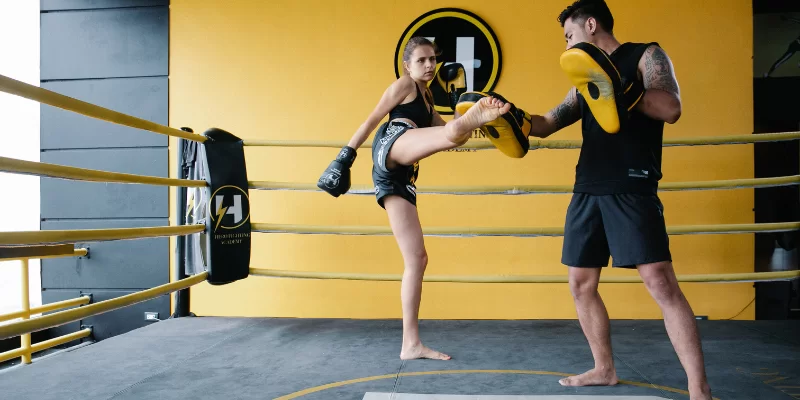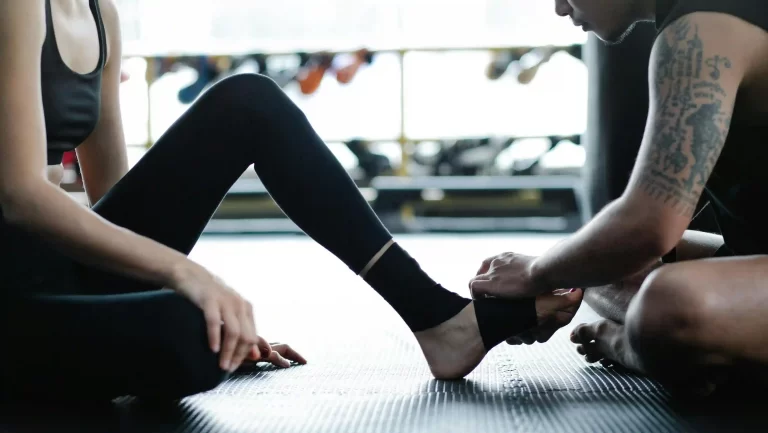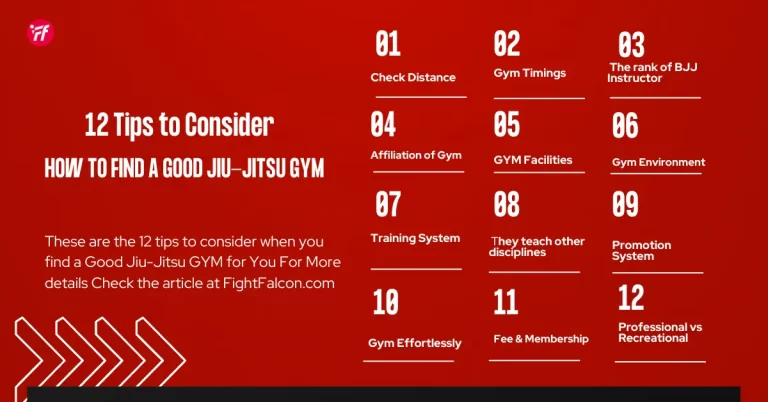Mastering the Art of Beginner Kickboxing: Easy Steps for Newbies
Kickboxing is an excellent and exciting way to learn how to protect yourself and get super fit at the same time. If you are just starting and feeling a little interested, you have come to the right place. In this article, we will explain the world of beginner kickboxing. We will show you what it is all about, how to get started, and what amazing things you can achieve while having fun. So, get ready to kickstart your kickboxing adventure.
What is beginner kickboxing?
Kickboxing is a sport where you stand up and fight. You use both your hands for punching and your feet for kicking. It is all about how you move and where you put your feet. At first, it might seem tricky, but as a beginner, you will start with the basics of punching with your hands and feet and how to stand and move properly. As you go along, things can get more complicated, but everyone starts with the simple stuff.
In competitions like the UFC, where fighters stand up and exchange strikes, it is like competitive kickboxing. They use their punching and kicking skills during this phase. However, in MMA, the fight can get more different because it includes takedowns and ground grappling, where fighters use techniques from other martial arts. So, it is not just kickboxing; it is a mix of different fighting styles that make MMA exciting and unique.
History of Kickboxing
Kickboxing is a martial art that is all about full-contact combat. Its roots trace back to Thailand, where an early version known as Muay Thai was born. Muay Thai originally started as a self-defense method but eventually became a sport when traditional combat methods. Kickboxing, on the other hand, came into existence by mixing Muay Thai with ideas and techniques from various other martial arts. So, it is like a fusion of different fighting styles that makes kickboxing the exciting sport it is today.
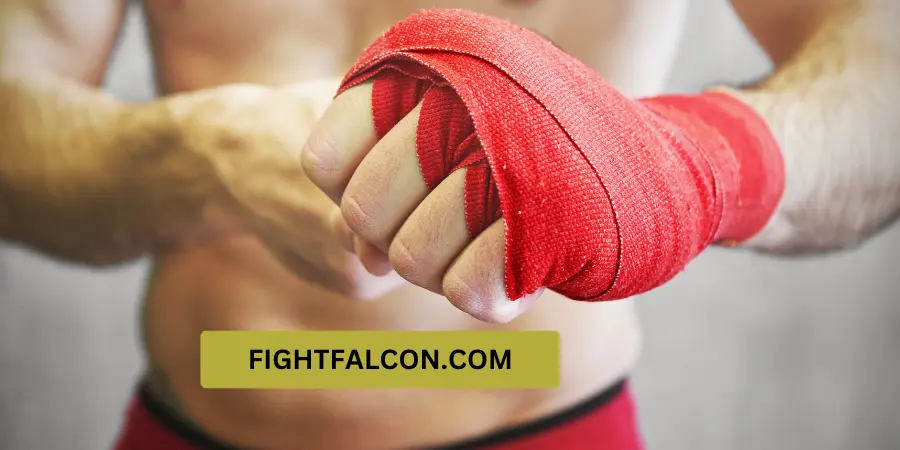
Kickboxing developed into a full-contact sport with timed rounds and found its way into boxing rings. The term kickboxing was born during this period.
If you are interested in kickboxing, you are not alone. Kickboxing became popular in the fitness world, especially in the 1990s and early 2000s.
This version is called cardio kickboxing. Many other instructors followed suit by creating videos and classes based on this style. Additionally, different group fitness centers began offering various martial arts and boxing workouts to meet the rising interest in these activities. So, if you want to try kickboxing, you will have different options, along with related exercises.
Benefits of Kickboxing
Exercise is excellent for you. It boosts your energy, keeps your blood pressure in check, and helps you sleep better. But when it comes to kickboxing, it offers some unique advantages.
1. Cardiovascular Fitness
Kickboxing makes your heart beat faster, like when playing a fun game. This helps your heart get more robust, and you can keep going longer without getting tired. It is like having a supercharged engine in your body.
2. Strength
Kickboxing helps make your muscles, especially in your legs, tummy, and arms, solid and powerful. It is like getting superhero muscles.
3. Flexibility
Think of flexibility as being as bendy as a rubber band. Kickboxing affects lots of different moves that make your body more flexible. This helps you move smoothly and avoid stiffness.
4. Weight Loss

When you do kickboxing regularly, you can burn extra calories, like melting away the stuff that can make you a bit chubby. It is a fun way to lose weight and get in great shape while doing something you enjoy.
5. Physical Benefits
Kickboxing can work on various muscles, but it depends on the kickboxing style. Cardio kickboxing is excellent for cardio like running and works your tummy muscles. Regular kickboxing is a martial art that helps muscles all over your body. Usually, it is the upper body, like your arms and shoulders, that gets a good workout in kickboxing.
Kickboxing is super for making your upper body strong. It also makes your heart and lungs better at giving you energy, and it improves your ability to do fast, powerful moves. Plus, it helps you get more flexible and quicker in your movements. It is like a one-stop shop for building strength and getting faster and fitter.
6. Everyday Benefits
Because kickboxing involves lots of cardio, it is fantastic for your heart and blood vessels. When we say cardiovascular health, we mean how well your heart and blood vessels work together. A healthy heart can lower the risk of heart disease and other heart issues. So, kickboxing is like a heart-boosting workout that keeps your ticker in top shape.
Kickboxing is not just great for your body; it is fantastic for your coordination and balance, too. It helps you improve at using your hands and eyes together, understanding where you are, and reacting quickly. These skills can come in handy in your daily life, making you more coordinated and balanced both in and out of the kickboxing ring.
According to Tommy Dibernardo, a former MMA fighter and trainer at RockBox Fitness, kickboxing involves moving in many different ways, which is important for how we carry in our everyday lives. It is like practicing the movements we need for regular activities.
How To Start Kickboxing
Before you begin your kickboxing journey, Kickboxing is a sport where you get in and use your whole body. If you want to try kickboxing, here are some key things to remember as you begin.
1. Find a Gym

Look for a kickboxing gym or martial arts school in your area that offers classes for beginners. The gym is the place where a student learns well.
2. Safety Gear
You will need the right gear for training, like hand wraps, gloves, shin guards, mouthguard, and headgear. This gear protects you and your training partners. This safety gear is very helpful for you. These gears protect from different injuries.
3. Comfortable Clothing
Wear comfy workout clothes and the right shoes for kickboxing. Make sure your clothes let you move freely and your shoes give good support. This way, you can enjoy your kickboxing workout without any discomfort.
4. Choose an Instructor and Style
Corey Nelson, a certified expert personal trainer, suggests that if you are just starting as a beginner, it is a good idea to begin with a no-contact cardio kickboxing class. These classes are available at many places like YMCAs, local health clubs, and smaller studios. Cardio kickboxing is a less intimidating way to start your kickboxing journey, and it is often easier on the budget compared to hiring a personal trainer. It is a great way to get into kickboxing in a friendly and affordable group setting.
If you already have some kickboxing experience or you enjoy contact sports, you might want to consider competitive kickboxing. These classes are often smaller, so you get more personalized attention. If you become passionate about kickboxing and wish to take it to the next level, you could think about working with a personal trainer, especially if you are interested in competitions. They can help you fine-tune your skills and get you ready for the challenges of kickboxing at a higher level.
Whichever instructor and class you decide on, it is important to have a chat with your instructor about your fitness level and your general health. Let them know if you have any health issues or injuries they should be aware of.
5. Get the Right Kickboxing Gear
As mentioned by Dibernardo, many studios will ask you to have hand wraps and boxing gloves. These are important to keep your hands safe from getting hurt. It is also a good idea to have a big water bottle to stay hydrated. These are the basics, but it is good practice to check with your instructor for any specific equipment requirements you might need to purchase. You can get the Kickboxing Shoes for men and women easily for feet protection.
Nelson explained that it is a good idea to have sneakers with good grip, and if your hair is long, don’t forget a hair tie to keep it out of your face. In terms of safety gear you may need, Here are listed below.
When it comes to your attire, make sure your clothing is comfortable but not overly loose or prone to getting caught on things. It is essential to remove any jewelry as it can lead to injuries or get tangled in gear.
Basic Techniques in Kickboxing, When you are starting with kickboxing, it is important to learn some basic moves. These moves are like the ABCs of kickboxing. They help you understand how to stand, punch, and kick correctly. Stances are how you stand in kickboxing. You will learn two main views: the fighting stance and the guard stance. These stances help you balance and move around effectively.
Different Types Of Punches
Punches Kickboxing includes different types of punches. Here are some key ones.
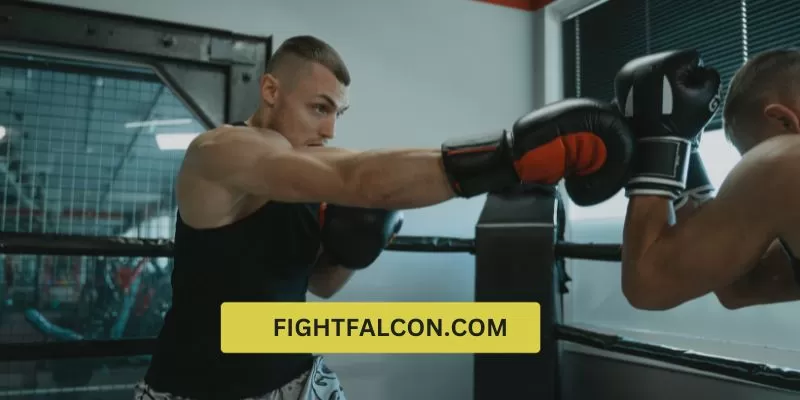
In kickboxing, punches are a big part of the action. These punches come from boxing, and there are six main ones to master. Let’s break them down:
1. Jab: Your Straight Lead Punch
The jab is like a quick, straight punch with your lead hand, the hand closest to your opponent. It helps you measure distance and set up other punches.
2. Cross: The Power Punch,
The cross is a straight punch with your rear hand, the hand farthest from your opponent. It is a powerful punch that uses your whole body, from your feet to your fist.
3. Hooks: The Curved Power Punches
Hooks are like powerful curved punches from both your lead and rear hands. They have a shorter reach but pack a punch.
4. Uppercuts: The Rising Strikes
Uppercuts are punches that go up and are thrown with both your lead and rear hands. They are super strong but need to be used up close.
5. Front Kicks: Long Distance Kicks
Kickboxing is not just about punches; there are kicks, too. Front kicks are long-range and can keep your opponent at a distance or deal damage up close.
6. Roundhouse Kicks: The Versatile Strikes
Roundhouse kicks swing in a curved motion, and you can use them to strike your opponent’s legs, body, or head. They come in different styles, with varying speed and power.
Learning these techniques takes practice and is consuming, but it is a lot of fun. Your instructor will guide you in doing them correctly, and with time, you will become more confident and skilled in using these moves.
How To Defense in Kickboxing
In kickboxing, knowing how to defend yourself is just as important as knowing how to attack. While you can’t practice defense alone, it is good to understand the basics of protecting against punches and kicks.

1. Blocking: A Simple Defense
Blocking is the easiest way to defend against punches and kicks. It is like using your arms to shield yourself. You can block strikes aimed at sensitive areas like your head and body. The downside is that you still feel some impact, especially from strong hitters.
2. Parrying: Deflecting Strikes
Parrying is a bit fancier. It involves redirecting the incoming punch or kick away from you. It is a better defense because it stops the strike from hitting you and allows you to counterattack.
3. Checking Kicks: Defense with Your Legs
Checking kicks is like using your legs to block instead of your arms. When you scan a kick, you use your knee or the upper part of your shin to stop it. This method also hurts the attacker by forcing their weaker shin or foot to hit your stronger leg bones.
These are the basics of defense in kickboxing. Learning them can help you protect yourself and even turn the tables in a fight.
Final Words Of Geginner Kickboxing
As we come to the end of our beginner’s guide to kickboxing, remember that this journey is all about you. Kickboxing is more than just kicks and punches. It is a path to self-confidence, strength, and a healthier you. Starting might feel challenging, but don’t be discouraged. Everyone begins as a beginner, and progress comes with practice and patience. Your instructors and fellow kickboxers are there to support and guide you.
Through kickboxing, you will not only learn to defend yourself, but you will also get in great shape, boost your mental focus, and build lasting friendships. So, put on your gloves, lace up your shoes, and take that first step into kickboxing. It is an adventure filled with energy, fun, and endless possibilities. In this article, we explained all about beginner kickboxing.
Faqs
1. What is kickboxing, and is it suitable for beginners?
Kickboxing is a sport that combines punches and kicks. It is excellent for beginners who want to learn self-defense and get fit.
2. Do I need to be super fit to start kickboxing?
No, you don’t need to be super fit. Kickboxing can help you get in shape, and you can start at your own pace.
3. What should I wear for kickboxing classes?
Wear comfortable workout clothes and proper footwear. You will also need hand wraps, gloves, and other gear your instructor recommends.
4. Is kickboxing safe for beginners?
Yes, kickboxing can be safe if you follow your instructor’s guidance and use the proper safety gear. Always start with the basics.
5. Can I do kickboxing just for fitness, or is it for fighting only?
You can do kickboxing just for fitness and self-defense. You don’t have to compete if you don’t want to. It is a versatile sport for various goals.

